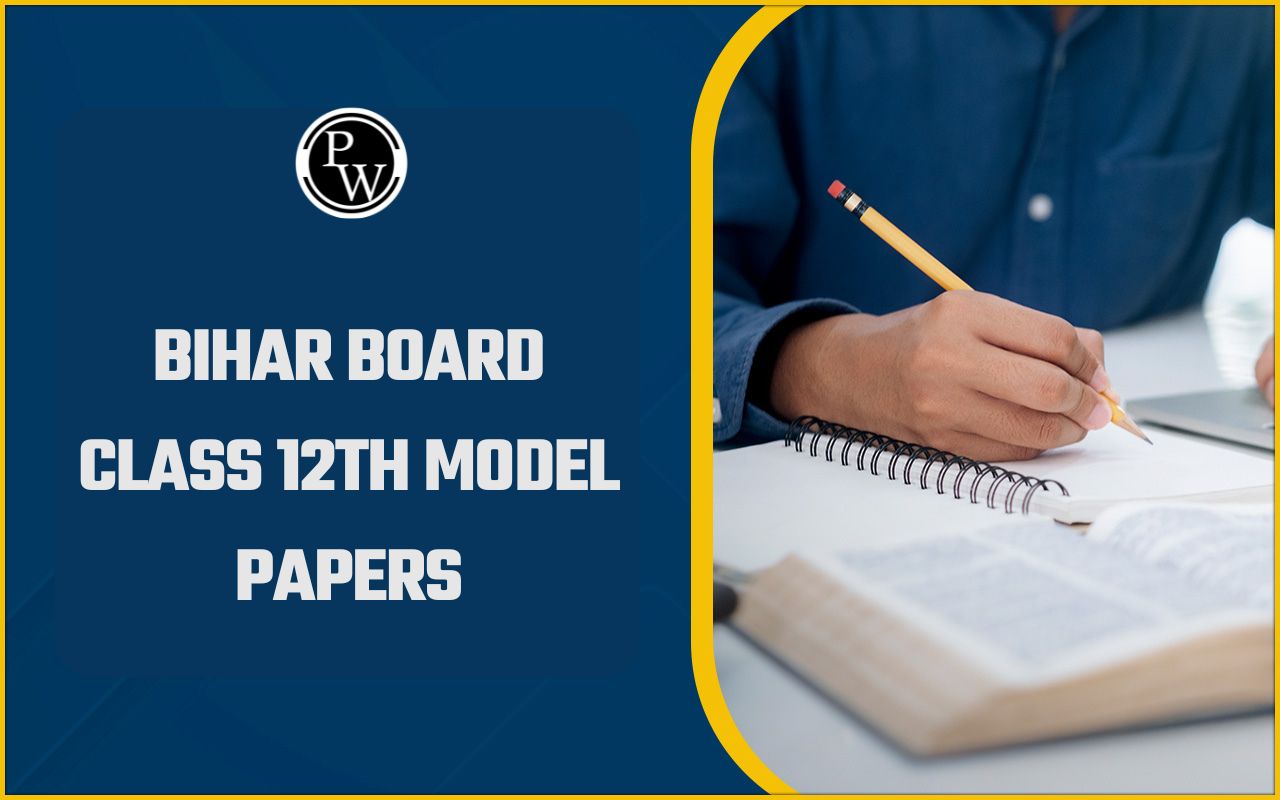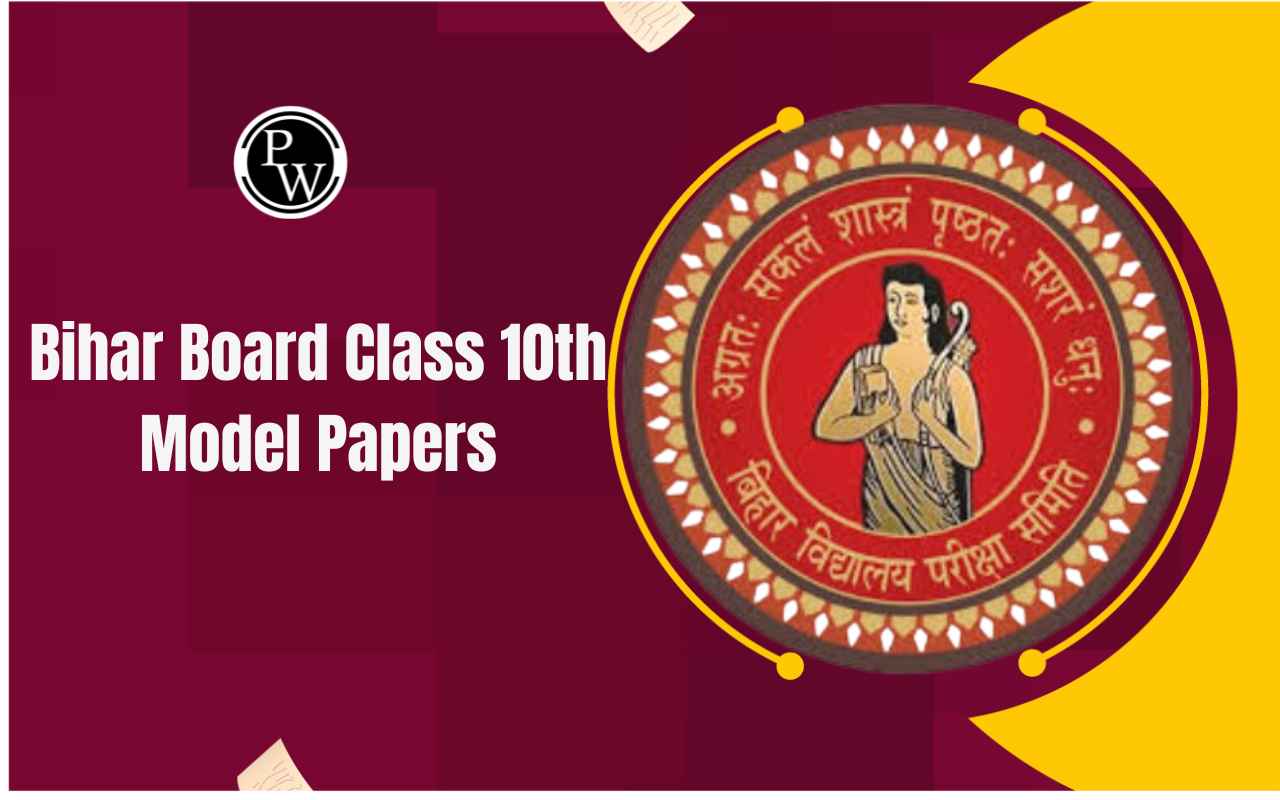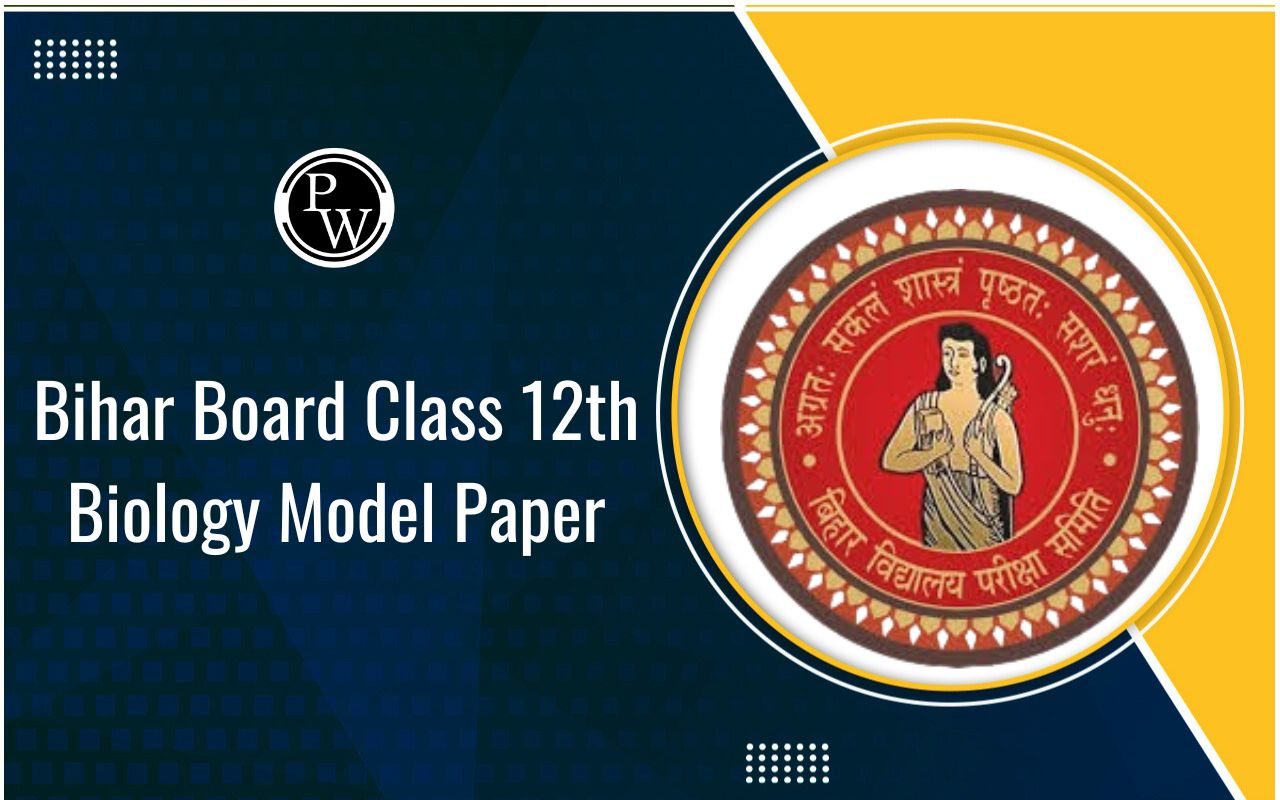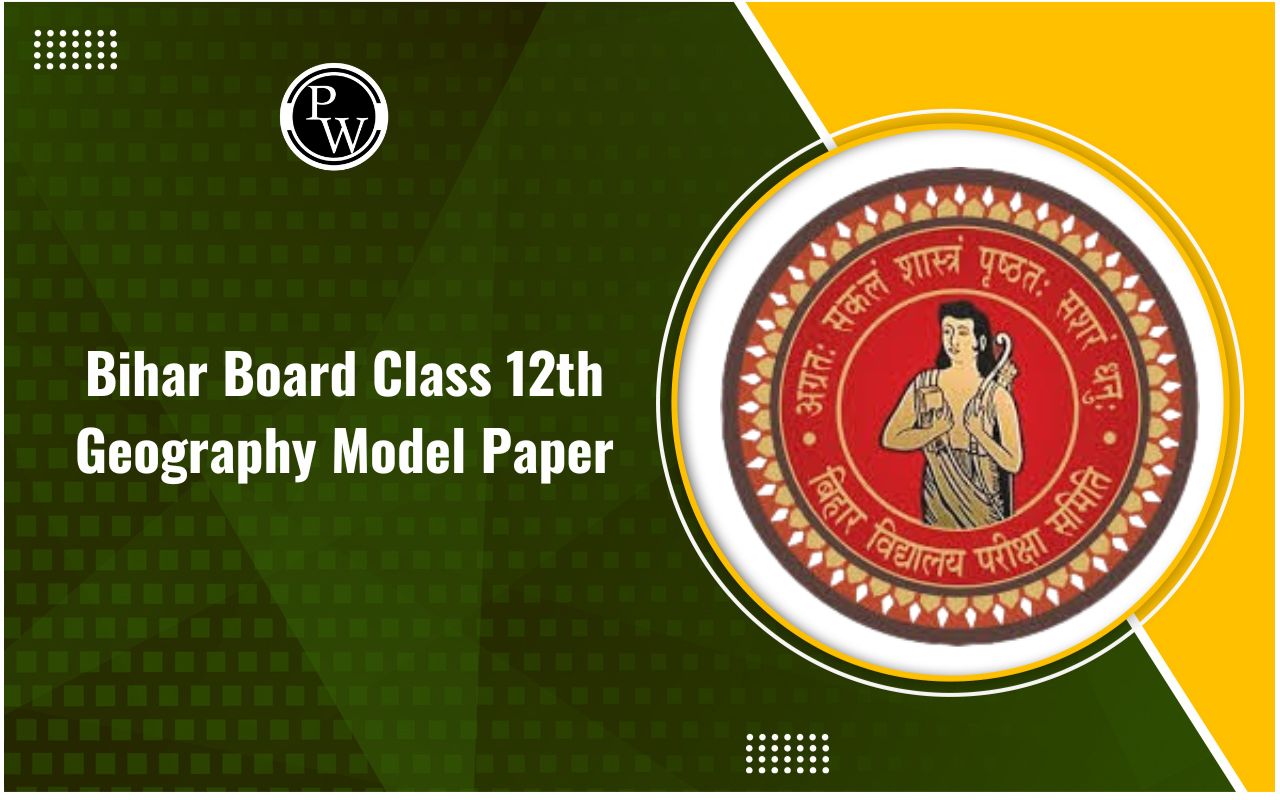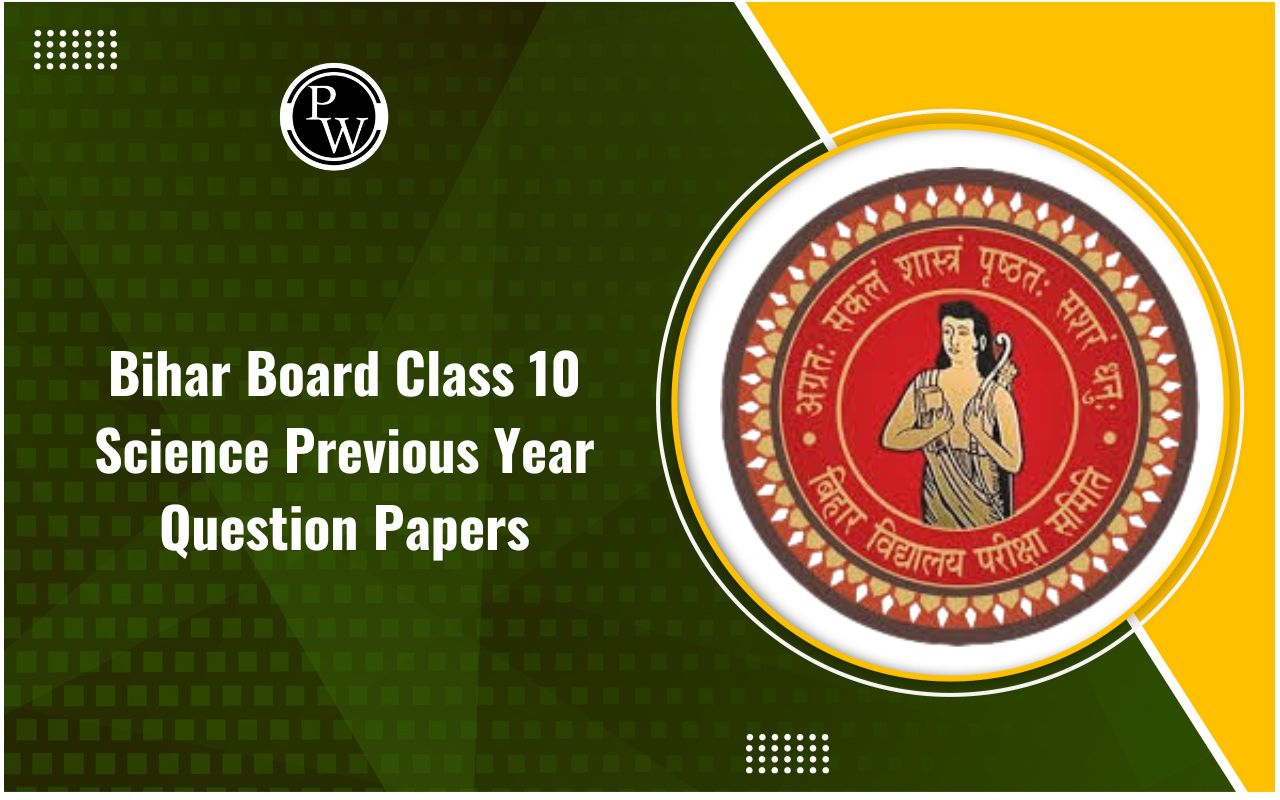
Bihar Board 12th Class Physics Syllabus 2025-26: The Bihar School Examination Board (BSEB) has released the official Class 12 Physics syllabus for the academic session 2025-26. This syllabus is created to help students build a strong foundation in both theoretical and practical aspects of physics. It covers all essential topics needed for the board exams and entrance test preparation like JEE and NEET.
The syllabus includes topics like mechanics and thermodynamics, following the structured unit-wise approach that focuses on improving conceptual clarity and problem-solving abilities. Students must give attention to both theoretical concepts and experiments to score well.
Bihar Board 12th Class Physics Syllabus 2025-26
Bihar Board 12th Class Physics Syllabus 2025-26 includes the structure and format of the Physics syllabus, including marks distribution and exam time. Here is the overview of the syllabus:
|
Bihar Board 12th Class Physics Syllabus 2025-26 Overview |
|
|
Particulars |
Details |
|
Board |
Bihar School Examination Board (BSEB) |
|
Class |
12th |
|
Subject |
Physics |
|
Academic Session |
2025–26 |
|
Total Marks |
100 (Theory + Practical) |
|
Theory Paper Marks |
70 |
|
Practical/Project |
30 |
|
Exam Duration |
3 Hours |
|
Official Website |
|
Bihar Board 12th Class Physics Syllabus 2026 PDF Download
To avoid missing any topic or section, students should download the official Bihar Board Class 12 Syllabus for Physics 2026 PDF. It gives a clear unit-wise list of what to study and helps in planning study time wisely. It also ensures that you stay aligned with the exam pattern and question types. It is especially useful during board exam preparation. You can download the official syllabus from here:
Bihar Board 12th Class Physics Syllabus
Study without using the internet
Bihar Board 12th Class Physics Syllabus 2025-26 Detailed
Bihar Board 12th Class Physics syllabus 2025-26 is given in detail to help students understand the topics and sub-topics included in the curriculum. Here’s the detailed syllabus:
-
Unit I: Physical world and measurement
-
Physics: scope and excitement, nature of physical laws; Physics, technology and society.
-
Need for measurement: Units of measurement, systems of units. S.I. units, fundamental and derived units, length, mass and time measurements, accuracy and precision of measuring instruments, errors in measurement, significant figures, regular and irregular errors.
-
Dimensions of physical quantities, dimensional analysis and its applications.
-
Unit II: Kinematics
-
Frame of reference, Motion in straight line, position time graph, speed and velocity. Uniform and non-uniform motion, average speed and instantaneous velocity.
-
Uniformly accelerated motion, velocity time and position time graphs, relations for uniformly accelerated motion (graphical treatment).
-
Elementary concepts of differentiation and integration for describing motion.
-
Scalar and vector quantities: Position and displacement vectors, general vectors and notation, equality of vectors, multiplication of vectors by a real number, addition and subtraction of vectors, relative velocity.
-
Unit vector, Resolution of a vector in a plane-rectangular components.
-
Motion in a plane, cases of uniform velocity and uniform acceleration – projectile motion, uniform circular motion.
-
Unit III: Laws of Motion
-
Intuitive concept of force, Inertia, Newton's first law of motion, momentum and Newton's Second law of motion, impulse, Newton's third law of motion, Law of conservation of linear momentum and its applications.
-
Equilibrium of concurrent forces; static and kinetic friction, laws of friction, rolling friction, lubrication.
-
Dynamics of uniform circular motion: centripetal force examples of circular motion (vehicle on level circular road, vehicle on banked road).
-
Unit IV: Work, Energy and Power
-
Scalar product of Vector work done by a constant force and a variable force, kinetic energy, work-energy theorem, power.
-
Notion of potential energy, potential energy of a spring, conservative forces; conservation of mechanical energy (Kinetic and potential energies), non conservative forces, elastic and inelastic collisions in one and two dimension.
-
Unit V: Motion of System of Particles and Rigid Body
-
Centre of mass of two-particle system, momentum, conservation and centre of mass motion, centre of mass of a rigid body, centre of mass of circular ring, disc, rod and sphere.
-
Vector product of vectors; moment of a force, torque, angular momentum, conservation of angular momentum with some examples.
-
Equilibrium of rigid bodies, rigid body rotation and equations of rotational motion, comparison of linear and rotational motion, moment of inertia, radius of gyration. Values of M.I. for simple geometrical objects (no derivation), statement of parallel and perpendicular axes theorems and their applications.
-
Unit VI: Gravitation
-
Kepler's laws of planetary motion, The universal law of gravitation, Acceleration due to gravity and its variation with altitude and depth.
-
Gravitational potential energy, gravitational potential, escape velocity, orbital velocity of satellite. Geo-stationary satellites.
-
Unit VII: Properties of Bulk Matter
-
Elastic behaviour, stress-strain relationship, Hooke's law, Young's modulus, Bulk modulus, Shear modulus of rigidity.
-
Pressure due to fluid column, pascal's law and its applications / hydraulic lift and hydraulic brakes.
-
Effect of gravity on fluid pressure.
-
Viscosity, Stoke’s law, terminal velocity, Reynold’s number, Streamline and turbulent flow, Bernoulli’s theorem and its applications.
-
Surface energy and surface tension, angle of contact, application of surface tension, ideas to drops, bubbles and capillary rise.
-
Unit VIII: Heat and Thermodynamics
-
Heat, temperature, thermal expansion, specific heat capacity. Calorimetry, change of state, latent heat.
-
Heat transfer – conduction, convection and radiation, thermal conductivity. Newton's law of cooling.
-
Thermal equilibrium and definition of temperature (zeroth law of thermodynamics). Heat, work and internal energy.
-
First law of thermodynamics.
-
Second law of thermodynamics, Reversible and irreversible processes. Heat engines and refrigerators.
-
Unit IX: Behaviour of Perfect Gas and Kinetic Theory
-
Equation of state of a perfect gas, work done on compressing a gas.
-
Kinetic theory of gases: Assumptions, concept of pressure, Kinetic energy and temperature. rms speed of gas molecules, degrees of freedom, law of equipartition of energy (statement only) and application to specific heat capacities of gases, concept of mean free path, Avogadro's number.
-
Unit X: Oscillations and Waves
-
Periodic motion – period, frequency, displacement as a function of time, periodic functions, simple harmonic motion (SHM) and its equation, phase, oscillation of a spring – restoring force and force constant.
-
Energy in SHM – Kinetic and potential energies, simple pendulum – derivation of expression for its time period.
-
Free, forced and damped oscillations (qualitative ideas only), resonance.
-
Wave motion, Longitudinal and transverse waves, speed of wave motion. Displacement relation for a progressive waves, principle of superposition of waves, reflection of waves, standing waves in strings and organ pipes, fundamental mode and harmonics. Beats, Doppler effect.
Bihar Board Class 12 Chemistry Syllabus
Bihar Board 12th Class Physics Syllabus 2025-26 Marking Scheme
Understanding the marking scheme helps students allocate their effort according to the weightage of each unit. It also allows students to identify high-scoring topics and set study priorities.
As seen in the table below, major units such as Kinematics, Laws of Motion, and Oscillations and Waves carry significant marks. Mastering these topics with conceptual clarity and adequate numerical practice is key to scoring well.
|
Bihar Board 12th Class Physics Syllabus 2025-26 Marking Scheme |
||
|
Unit No. |
Unit Name |
Weightage |
|
I |
Physical World & Measurement |
03 |
|
II |
Kinematics |
10 |
|
III |
Laws of Motion |
10 |
|
IV |
Work, Energy & Power |
06 |
|
V |
Motion of System of Particles & Rigid Body |
06 |
|
VI |
Gravitation |
05 |
|
VII |
Properties of Bulk Matter |
08 |
|
VIII |
Heat & Thermodynamics |
07 |
|
IX |
Behaviour of Perfect Gas & Kinetic Theory |
05 |
|
X |
Oscillations & Waves |
10 |
|
Total |
70 |
|
Bihar Board 12th Class Physics Syllabus 2026 Practicals
Physics practicals are an essential part of the Bihar Board 12th Class Physics Syllabus 2025-26 curriculum. These experiments develop analytical thinking and help students apply the theoretical concepts through observation and hands-on learning.
Experiments include:
-
Use of Vernier Callipers
-
Use of Screw Gauge
-
Measurement of mass, diameter, volume
-
Study of friction and oscillations
-
Determination of Young’s modulus, surface tension, viscosity
-
Calibration of thermometers and studying specific heat
-
Sound velocity using resonance tubes
Activities such as drawing graphs, measuring with instruments, and performing calculations help improve accuracy and scientific skills.
How to Prepare for the Bihar Board 12th Class Physics Exam 2026?
To score well in Physics, you need to follow specific exam preparation tips that balances both conceptual understanding, regular numerical practice, and good practice on practical work. Here are some Bihar Board 12th Class Physics preparation tips:
-
Understand the formulas rather than simply memorizing them. Focus on understanding the underlying principles. Conceptual clarity in mechanics, thermodynamics, and wave motion will help you solve even twisted questions confidently.
-
Numerical problems carry a high weightage of marks in the written exam. You must solve problems from each chapter, especially from high-weightage units like Kinematics, Laws of Motion, and Oscillations.
-
NCERT is the base of the board exam. Understand the examples, derivations, and exercises. Stick to the NCERT terminology and explanations to avoid confusion in board answers.
-
Many questions in the written exam are based on derivations and well-labelled diagrams. Practice writing them neatly and with correct steps so you can reproduce them during the exam.
-
Solving at least five years of previous question papers as it will give you a clear idea of the question pattern. It will also improve your time management and boost your confidence before the exam.
|
Bihar Board Related link |
|
Bihar Board 12th Class Physics Syllabus 2025-26 FAQs
What is the total marks distribution in Bihar Board Class 12 Physics?
Which chapters carry the highest marks in Bihar Board Physics?
Is the Bihar Board 12th Physics syllabus based on NCERT?
How many chapters are there in Physics Class 12 Bihar Board?
Which is the easiest chapter in Physics?


